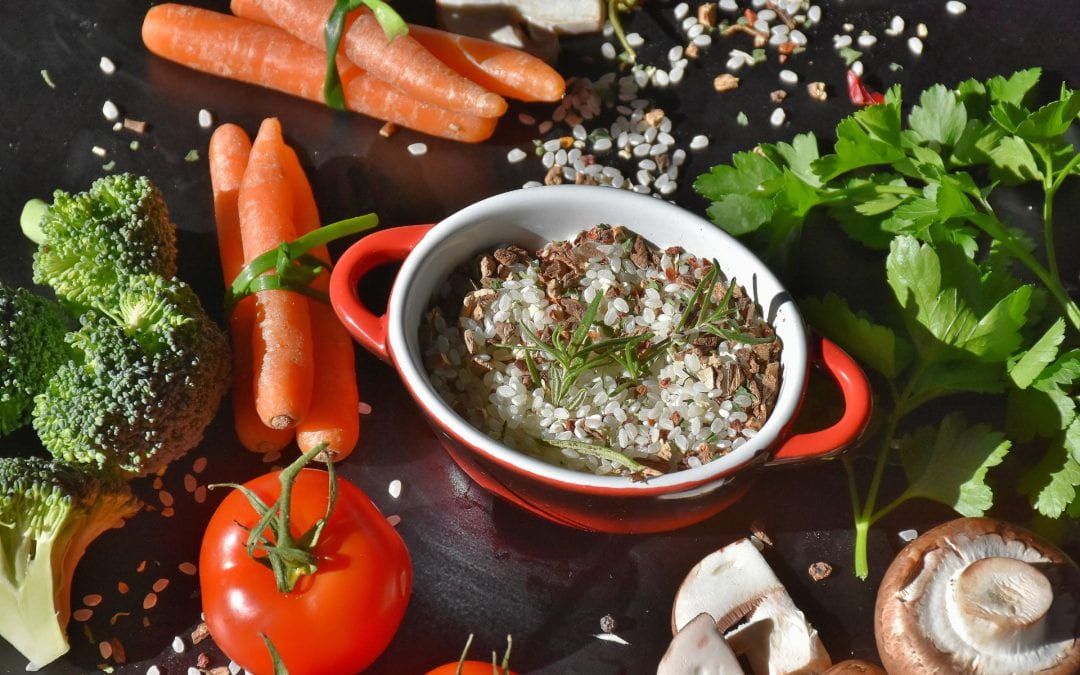
Blog, Recipes, Uncategorized
Across the country—and within the Penn State community—many people face food insecurity and struggle to consistently provide nutritious foods for themselves and their household. Meanwhile, food waste remains another problem facing the nation.
According to The World Counts, U.S. retailers and households waste approximately 40 million tons of food each year, which could feed 1 billion people. Food waste transpires in all parts of the food production and distribution system, including farms, retailers, and consumers.
“Food loss” and “food waste” refer to two separate concepts, although they may be confused for each other, according to Harvard University’s The Nutrition Source. While “food loss” identifies lost food prior to consumer handling (i.e. farming processes, storage locations, distribution areas), “food waste” occurs with food that is ready for consumption by retailers or individual consumers.
The United States Environmental Protection Agency created a Food Recovery Hierarchy to manage and minimize food waste. For instance, the organization lists “source reduction” as the most preferred method to limit waste, and this involves reducing the amount of surplus food generated and only creating enough for consumption. “Feeding hungry people” acted as the next most preferred method, and this level involves donating excess food to pantries, food banks, and other shelters. Subsequent levels are as follows: feeding animals (using extra food for animal feed), industrial uses (using extra food for fuel conversions), composting (creating soil), and landfill/incineration.
Various factors impact food waste; however, there are tips that can be used to improve leftovers. Tips to minimize leftovers:
- Only purchase food that you know you will be able to eat.
- Meal plan in order to prepare what will be made each day.
- Choose smaller meals, so you’re less likely to create leftovers.
- Store food products appropriately.
- Freeze food products that you won’t eat immediately.
- Share extra food with friends, family, and food pantries.
Within the United States, approximately 95% of all discarded food ends up in local landfills and garbage dumps rather than being used effectively or donated, according to Harvard University. In fact, Recycle Track Systems notes that U.S. landfills contain more food than any other products. Similar problems with food waste face countries across the globe.
Misunderstandings and misconceptions about food labels acts as a common cause of food waste within the United States. Many people face confusion about food labels—such as “sell by” and “use by”—and the implications for the food’s quality.
To simplify confusion, Recycle Track Systems urges people to remember that “Best If Used By” labels refer to products that may not taste as expected—but still are safe to consume—after the listed date. Meanwhile, “Use By” labels reference products that pose safety concerns after the listed date and are (typically) classified as perishable.
Some people also toss their food products and leftovers rather than repurposing them for subsequent meals as leftovers. If one’s produce begins to go bad (but is not yet rotten), many people throw the products away rather than using them in creative meals.
Regardless of whether you are cooking a home cooked meal or eating a large meal at a restaurant, you may go home with leftovers. Sometimes, eating the same meal day after day after day gets old. However, you likely don’t want to waste the food by simply throwing it away. So, why not repurpose it? If you struggle to find new and innovative ways to eat your leftovers, then you’ve come to the right place! Here are 36 recipe ideas—ranging from pizza and quiches to pasta and waffles—to use as inspiration when you have leftovers again.
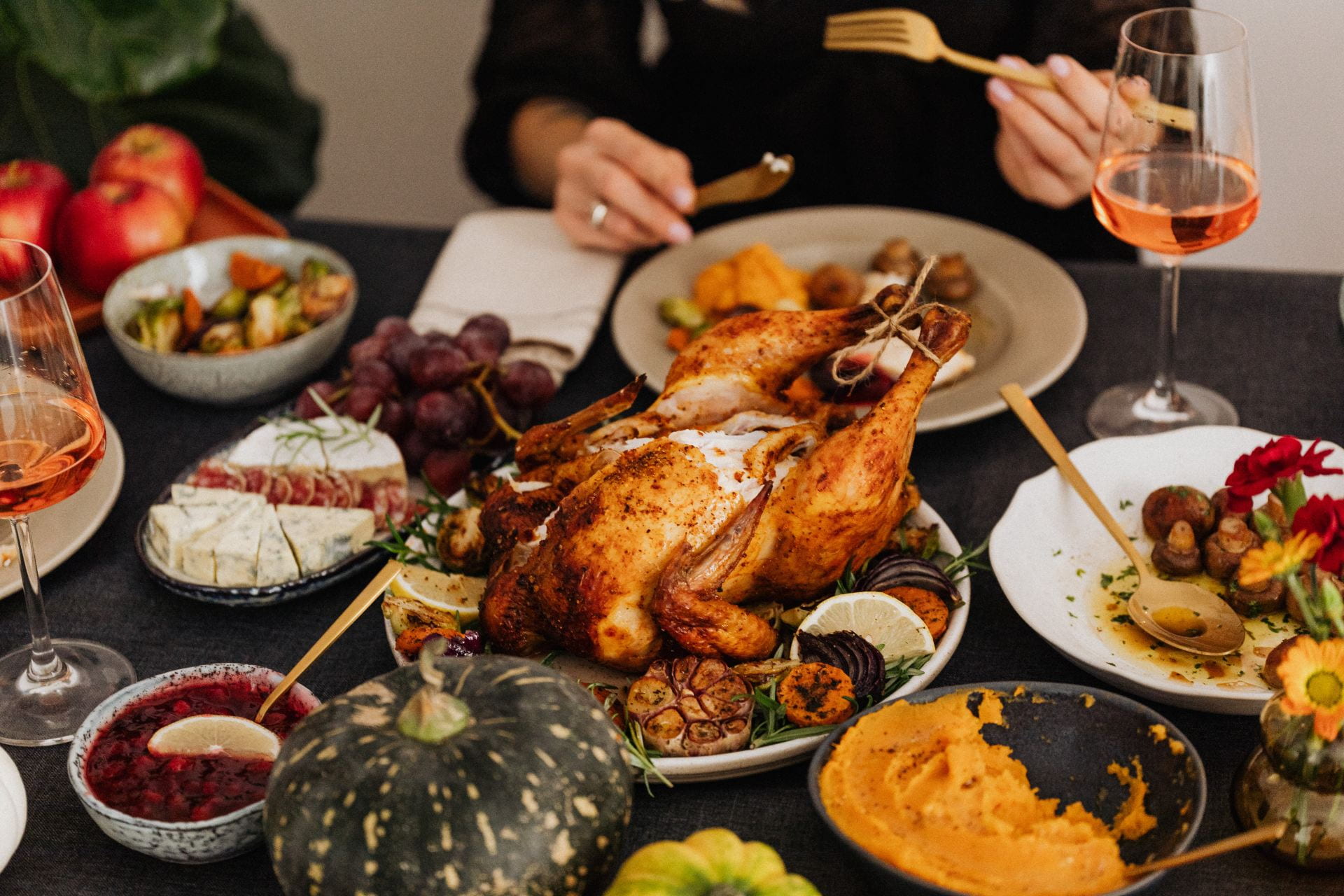
Photo by Karolina Grabowska on Pexels
1. Thanksgiving Dinner Leftover Waffles (from classic Thanksgiving feast leftovers)
Following your Thanksgiving dinner, many families possess containers filled with leftovers. Rather than reheating the same meals, consider creating “leftover Thanksgiving waffles” for a delicious brunch dish. You can include almost any Thanksgiving dish into your waffle. You save money and end up with a delicious breakfast treat.
For instance, incorporate 4 ½ cups of crumbled stuffing, 2 large eggs (beaten), fresh parsley, and the leftover items you feel like including in your dish (i.e. leftover turkey, gravy, cranberry sauce). Combine the ingredients together until thoroughly mixed. Pour the mixture into your preheated waffle iron, which should be coated generously with vegetable oil. Cook until your waffle is golden brown, and enjoy it with family and friends.
2. Fried Rice (from leftover rice)
Did you order Chinese takeout and have too much food—so much so that you have a bunch of leftover rice? Then, this recipe is for you.
Preheat a nonstick skillet over medium heat, and coat the pan in canola oil. Add 1 package of frozen Asian stir-fry vegetables to your pan once the oil is heated, and cook for approximately 5 minutes. Once your vegetables are tender, add your 2-3 cups of rice (or more if that’s what you desire), and cook for another 2-3 minutes. Make a whole in the middle of your pan by pushing your rice and vegetables to the outside corners. Crack two eggs inside the whole that was created in the middle of your food. Begin stirring your dish. Disperse the egg thoroughly. The egg should be fully cooked and solid. To finish off your dish, sprinkle in soy sauce to taste.
Recipe inspiration from The Spruce Eats.
3. Chocolate-Covered Potato Chips (from leftover chips)
Do you have leftover potato chips that are close to expiring? Consider melting dark chocolate and drizzle the chips to make a sweet-and-salty treat.
4. Pizza Lasagna (from leftover pizza)
Line the bottom of a non-stick pan with a thin layer of spaghetti sauce. Cut your leftover pizza up to fit in the bottom of the pan onto your sauce. Combine 1 ½ cups of ricotta cheese, a beaten egg, 1 tbsp of oregano, ½ tbsp of parsley, salt and pepper together until fully mixed. Layer the mixture on top of your pizza. Then, add more spaghetti sauce followed by a layer of meat or vegetables (depending on if you’re making a vegetarian or meat-based lasagna). Top with cheese, and add another layer of pizza on top before finally topping with more cheese (like Parmesan or mozzarella cheese).
Cover the dish with foil and bake for 30 minutes at 350 degrees. Remove the foil and bake for an additional 15 minutes.
Recipe inspiration from Giorano’s.

Photo by JÉSHOOTS on Pexels
5. Spaghetti Tacos (from leftover spaghetti)
If you are an iCarly fan—or were one as a child—consider making the classic dish from this TV show. If you have extra spaghetti from a previous dinner, then heat the noodles up with a generous amount of red sauce. Do you have a sensitivity to red sauce? Then, we recommend you use alfredo sauce or another variation that suits your interests. Once you’ve finished heating up your pasta, scoop the spaghetti into crispy taco shells. Sprinkle the meal with parmesan and mozzarella cheese.
6. Poutine (from leftover French Fries)
If you have leftover french fries (or sweet potato fries), reheat them in the oven, conventional oven, or airfryer to get them crispy again. You will primarily need gravy and cheese curds to make this dish.
Gain inspiration from this recipe by Seasons and Suppers.
7. Tiny Tacos (from leftover meat or tortilla chips)
Incorporate leftover shredded rotisserie chicken with greens, salsa, cheese, beans. You can also use a variety of other toppings like olives, onions, radishes, avocado, cilantro, and sour cream. Combine your ingredients, warm as necessary, and stuff tortilla chips with the concoction. This will be a quick and easy meal, especially after a game day if you purchased too many chips for your dips.
If you have leftover ground beef, heat up the meat with onions and taco seasoning in a skillet until fully cooked. Once cooked, blend the mixture with cheese, such as a serving Mexican cheese blend. Lay out your taco shells or tortilla chips on a pan and fill them with your taco mixture. Bake for approximately 5-6 minutes at 350 degrees. Then, sprinkle with more cheese and heat until melted thoroughly. This is another way to use your leftover meat to make delicious mini tacos.
8. Fish Wrap (from leftover fish)
Do you have any fish leftover from dinner or lunch? This is a great meal to easily repurpose. Add your leftover fish to a wrap filled with fresh veggies and mayo. Some vegetables to consider adding include cabbage, carrots, and onions.
9. Croutons (from leftover bread)
Dice your leftover bread into cubes using your hands to tear them apart or a knife. Try to make the cubes uniform in size so they bake evenly. Toss the bread in your choice of seasonings and olive oil or melted butter. You could use garlic powder, ranch seasoning, Italian seasoning, or salt and pepper. Once the bread is evenly coated and tossed, spread the bread out along a parchment-covered baking pan. Bake in the oven until the croutons are crispy. Flip the croutons to ensure they are cooked consistently. Then, use your homemade croutons as a delicious salad topping.
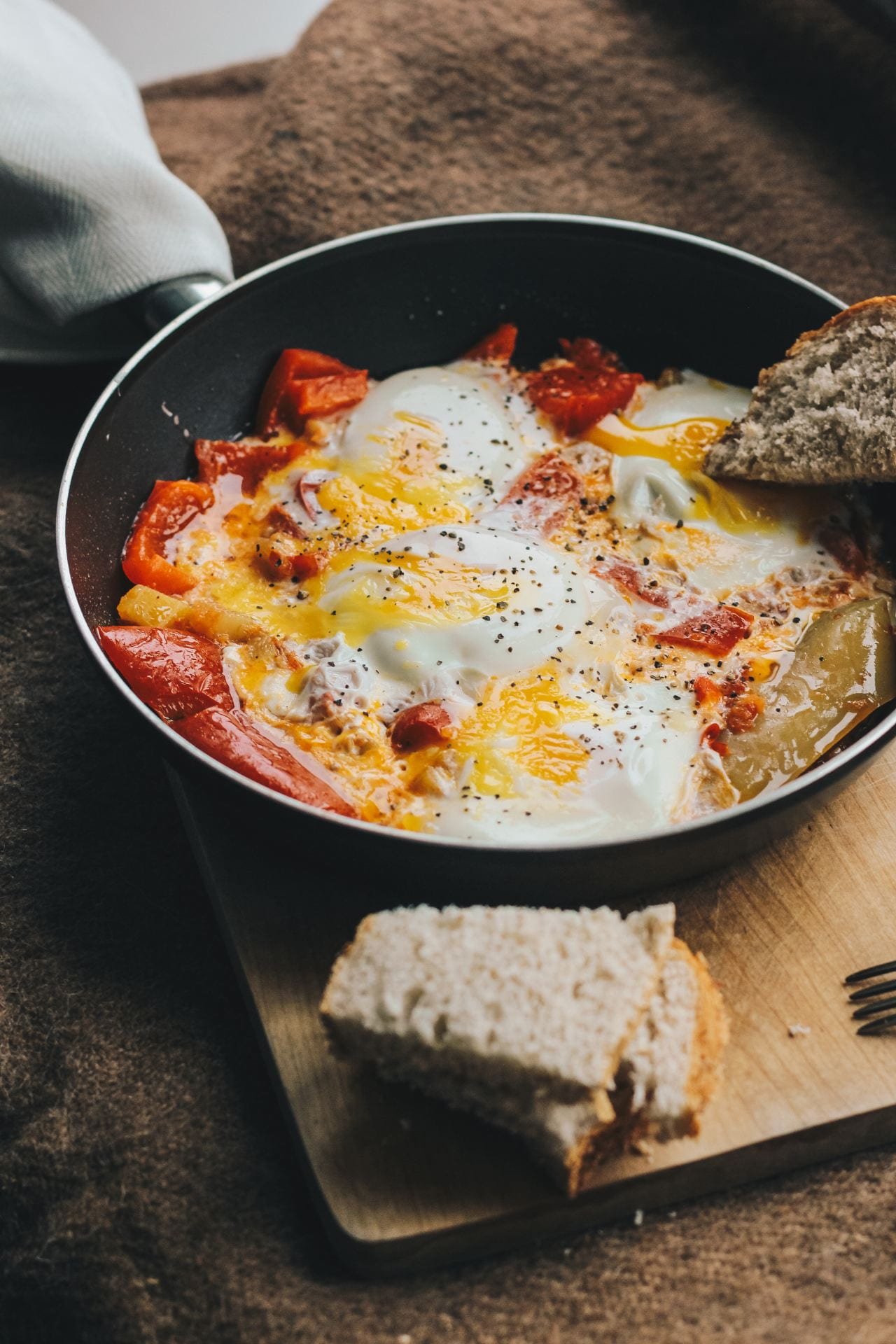
Photo by Marta Dzedyshko by Pexels
10. Breakfast hash (from leftover meat or veggies)
Use leftover meat in a skillet with veggies and beans (sweet potatoes, black beans, peppers) to make a delicious breakfast hash. Combine your favorite breakfast ingredients together into a new concoction, Consider adding eggs, potatoes and cheese to complete the dish.
11. Soups (from a variety of leftovers)
Making homemade soup allows people to use up leftovers in a delectable way, especially during cold winter months when warm foods are especially desired after a long day of walking through the frigid temperatures. You could add leftover steamed vegetables (i.e. broccoli or carrots) into a delicious soup with chicken and broth.
If you have leftover rotisserie chicken, break it up and use it in a tasty slow-cooked soup. Cooking soup allows one to reuse an array of items. Consider incorporating these other leftovers into your homemade soups:
- Tomato Sauce
- Spinach
- Pasta Noodles
- Beef Broth
Here is a recipe suggestion: combine carrots, greens, and pasta together with leftover chicken or turkey. This makes a delicious homemade chicken noodle soup. Add leftover veggies or meat into a simple broth using seasonings to spice up the flavor.
12. Burritos (from leftover beef, turkey, or chicken)
If you have leftover meats (like beef, turkey, or chicken), then you have the perfect opportunity to make burritos. Incorporate your meat with your favorite choice ingredients like rice, beans, cheese, and diced tomatoes. Simply use the ingredients you love and continue modifying the recipe. All you need to do is stuff your flour tortillas with your helpings. Heat the burrito to your liking and enjoy.
13. Buffalo Chicken Dip Pasta (from leftover buffalo chicken dip)
Did you make buffalo chicken dip for a tailgate event or social gathering? If you have extra dip, consider adding the mixture to freshly made pasta. You will have the flexibility to add extra ranch dressing, hot sauce, or cheese to make the dish to your liking.
Recipe inspiration from The Almond Eater.
14. Chicken and Rice Casserole (from leftover chicken and/or rice)
Combine your leftovers with vegetables (like carrots, peas, and green beans). Stir the mixture together with the following seasonings: garlic, paprika, and salt and pepper. Add a can of cream of chicken (or cream of mushroom) soup and a cup of chicken broth.
Spread the mixture into a glass cooking pan, and bake in the oven at 350 degrees Fahrenheit for approximately 35-40 minutes. Make a variation of this meal with other items that you have leftover that would make a delicious casserole.
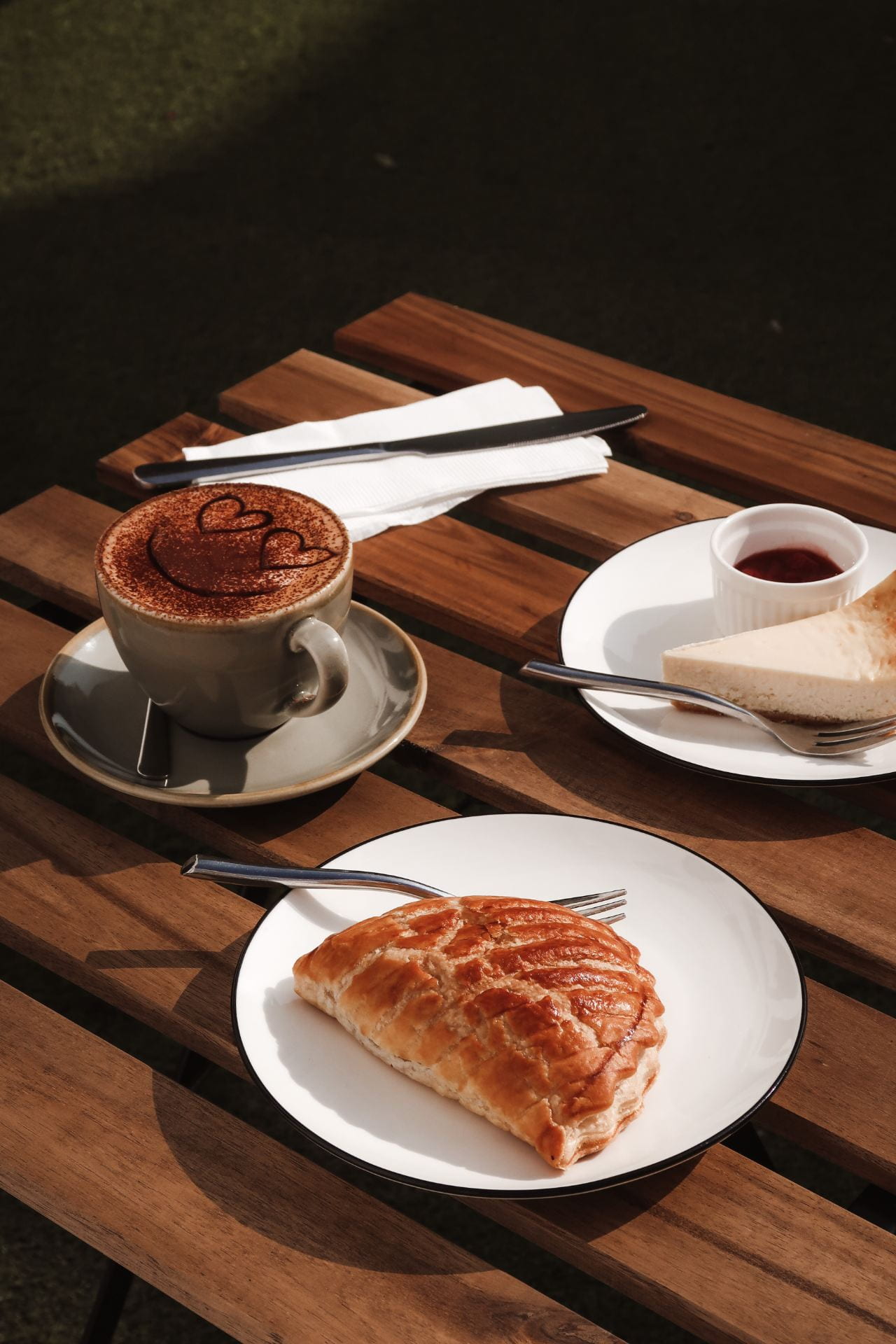
Photo by Jojo Yuen (sharemyfoodd) on Unsplash
15. Turnovers (from a variety of leftovers)
Using a flaky pastry crust filled with an assortment of ingredients, turnovers allow for versatile options—ranging from sweet and savory turnovers. For instance, combine sausage, cheese, and eggs to create a breakfast delicacy. Here are some other combination ideas to fill the turnovers:
- Ricotta cheese and chopped spinach
- Apple pie filling, sugar, cinnamon, and caramel sauce
- Strawberry jam, chopped fruits, cinnamon, and cream cheese
- Cooked ham, swiss cheese, and sauteed onions
- Ground beef, black pepper, sea salt, and American cheese
- Chopped vegetables, Rotisserie chicken, and mashed potatoes
Recipe inspiration from Taste of Home.
16. Kabob (from leftover meats and vegetables)
If you have leftover meats and vegetables, consider making kabobs. People may use a conventional oven, grill, or regular oven to create kabobs.
- Country Comfort: Sausage/Kielbasa, Squash, Zucchini, and Potatoes
- Tropical: Baked Ham, Pineapple Chunks, Green Peppers and Swiss Cheese Chunks
- Bruschetta: Grilled Chicken, Tomatoes, Mozzarella, and Green Peppers
- PB&J-Themed: Strawberries, Bread Coated in Peanut Butter, and Bananas
Use an array of seasonings to enhance your kabobs, especially when using meats.
Recipe inspiration from Taste of Home.
17. Vegetable Smoothie (from leftover vegetables)
Turn your leftover vegetables into a delicious smoothie filled with necessary nutrients. If you have leftover greens, use them in your next breakfast or post-workout shake. Incorporate your veggies with your favorite smoothie ingredients. Consider using the following items (depending on what you have in your pantry):
- Fruit Juice (Apple, Pineapple, Mango, Acai, etc.)
- Milk (Almond, Soy, Diary)
- Banana
- Yogurt
- Seasonings (Cocoa Powder, Cinnamon, Nutmeg, Vanilla)
- Nut Butters
- Berries (Strawberries, Blueberries, Raspberries, etc.)
- Protein Powder
- Avocado
- Coconut
- Seeds (Flax, Hemp)
18. Banana Bread (from leftover bananas)
If you have bananas that are about to expire, then you would have the perfect opportunity to make some fresh banana bread (or banana bread cookies). Most banana bread recipes contain essential vitamins and minerals, such as potassium and vitamin B.
Consider using this recipe from Tasty to make “Super Soft Banana Bread Cookies.”
19. Coated Banana Bites (from leftover bananas)
Do you have bananas that are close to expiration? This may be the recipe for you! Slice your bananas into the sizes you want. Dip the bananas in melted chocolate or peanut butter. Once dipped, you can roll the banana bites in a variety of toppings. Some topping suggestions include:
- Coconut
- Chopped Cookies or Oreos
- Nuts
- Chopped candies
- Sprinkles
Then, put the banana bites into the freezer to harden. This will be a nice cool treat to enjoy with company.
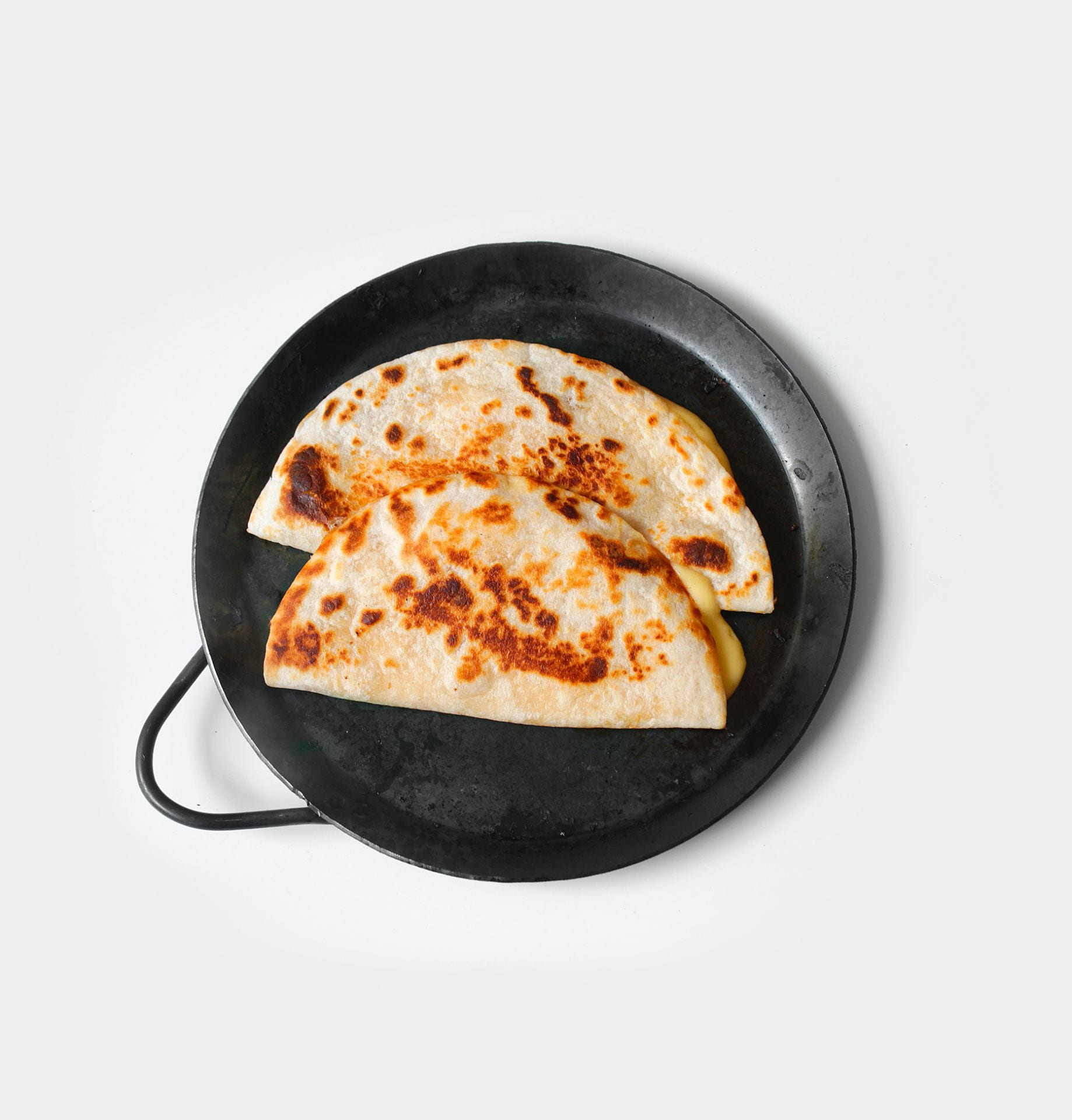
Photo by Fernando Andrade on Unsplash
20. Quesadilla (from leftover meat or cheese)
You’ll only need a few key ingredients to make a delicious quesadilla: a flour tortilla, cheese, and meat (which is even optional if you’re a vegetarian). If you have leftover chicken or pork, this is an easy way to use up the ingredients.
Some other ingredients to consider adding to your quesadilla include:
- Sriracha Sauce
- Taco Seasoning
- Pico De Gallo
- Black Beans
- Avocado
- Peppers
- Sauteed Vegetables
- Bacon Bites
- Spinach
21. Pasta Stir Fry (from leftover pasta, meat or vegetables)
Stir fried pasta will be your next go-to meal! Incorporate leftover pasta, meat or veggies together for this meal. Prepare your vegetables by chopping them into similar-sized pieces. This will allow your meal—and the ingredients within it—to cook evenly. You won’t have to worry about some of your vegetables being more cooked than others if the pieces are the same size!
Make your pasta separate from the meat and vegetables. Add your meat and vegetables to a heated pan filled with canola or peanut oil. Incorporate your meat and vegetables into your cooked pasta and stir thoroughly. Season your dish using spices and seasonings. You can also use your favorite soy sauce.
Recipe inspiration from the Kichn.
22. Veggie Pasta (from leftover veggies)
Do you have leftover vegetables from a previous meal or side dish? Elevate your next pasta dish by adding the vegetables for extra flavor. Consider adding any of these soften vegetables into your meal:
- Boil broccoli or cauliflower with seasonings, olive oil, garlic, or Parmesan cheese. Add it to your dish!
- Make bruschetta-themed pasta using tomatoes, mozzarella cheese, basil, and vinaigrette.
- Incorporate peas, carrots and corn into your dish along with a white cream sauce. This could be a delicious twist on traditional pot pie, especially if you use long noodles.
- If you have leftover mushrooms, consider adding them to your dish with a creamy alfredo sauce.
- You can mix spinach into almost any pasta dish for increased color, flavor, and nutrients.
To elevate a creamy alfredo pasta recipe, consider adding asparagus to the meal.
23. Stuffed Crescent Rolls (from leftover potatoes, stuffing, turkey or cranberries)
Do you have leftover Thanksgiving meal items like turkey, cranberry sauce, mashed potatoes and stuffing? Make stuffed crescent rolls!
Get a tube of packaged crescent roll pastry dough. Open the package and separate the mixture into triangles along the baking sheet. Spread mashed potatoes, stuffing, turkey and cranberry sauce onto your opened crescent roll. Fold the triangle tips over the filling. You can include other leftover ingredients into the roll as well before folding.
Cover the crescent roll dough with melted butter and sprinkle with seasonings of your choice. Bake until the crescent rolls are golden—approximately 15-20 minutes total. This is now ready to serve. You can even use gravy as the dip.
Recipe inspiration from Delish.
24. French Toast (from leftover bread)
If you have bread that’s close to its expiration date, consider making French Toast. If you don’t want to eat traditional French Toast, here are some ideas to elevate the dish:
- Crumble cookies (like Oreos) onto the top of your French Toast and drizzle the dish with the sauce of your liking (chocolate syrup, peanut butter syrup, caramel syrup).
- Coat the French Toast slices in cinnamon and nutmeg. Heat apples in a skillet with brown sugar as a topping.
- Make a S’mores French Toast sandwich by putting a chocolate bar and marshmallow between the bread pieces.
- Crumble bacon, sausage links, and scrambled eggs on top of your French Toast for a sweet-and-savory delicacy.
- Cover the French Toast in fruits (like strawberries, peaches, bananas, blueberries, and raspberries) and honey.
- Use your French Toast as the base of an Eggs Benedict sandwich. Coat the toast with ham, poached eggs, cheese, and hollandaise sauce.
- Coat the French Toast with granola, maple syrup, and yogurt.
- Cover the French Toast in nut butters like nutella and peanut butter. Add chopped bananas and drizzle with powdered sugar and sprinkles.

Photo by Spencer Davis on Unsplash
25. Top your baked or sweet potato (with leftover meat, veggies, or grains).
If you have any of these leftovers, then you should add them to your next baked potato. Baked potatoes contain various nutrients that are needed for one’s daily diet.
Consider these ingredients:
- Classic Baked Potato Toppings: Chives, Sour Cream, Cheese, Bacon Bits
- Veggies: Broccoli, Cauliflower, Mushrooms, Carrots, Peppers, Jalapenos, Guacamole, Avocado, Red Onions, Pico De Gallo, Tomatoes, Olives
- Meats: Chili, Taco Meat, Refried Beans
- Dressings: Ranch Dressing, Cheese Sauce
26. Salad (from leftover meat)
A variety of ingredients, especially meat products, would make great salad toppings for your next meal! Some items to consider add include:
- Nuts (i.e. Almonds, Peanuts, Sunflower Seeds)
- Veggies (i.e. Broccoli, Avocado, Cauliflower, Carrots, Peppers, Cabbage, Green Beans, Celery, Tomatoes, Onions)
- Fruits (i.e. Pineapple)
- Cheese
- Beans (i.e. Chickpeas, Black Beans, Pinto Beans)
- Pasta Noodles or Quinoa
27. Beef Ramen (from leftover hamburger)
Heat up traditional ramen noodles on the stove. Chop up your leftover hamburger into equal sized nuggets. Add the beef to the noodles and allow to simmer. Create or use your favorite sauce, and top your dish with sesame seeds.
28. Quiche (from leftover veggies)
You can make a quiche for any meal, regardless of whether you are desiring one for breakfast or dinner. A quiche acts as a savory egg custard—containing milk, eggs, and seasonings—that is typically baked within a flaky pie crust. You can include a variety of ingredients to enhance the flavor within your quiche like vegetables and cheese. Experiment with the flavor combinations to create the best dish, but avoid using fillings that are too wet (or high in water content) as that would moisten the quiche.
If incorporating vegetables into your quiche, food industry experts recommend cooking the veggies first so they soften. Vegetables often take longer to bake than the egg mixture within the quiche.
Consider filling your next quiche with the following ingredients or variations:
- Spinach, Mushrooms, and Feta Cheese Quiche
- Broccoli and Cheese Quiche
- Leek and Potato Quiche
- Garlic, Spinach, and Cheddar Cheese Quiche
- Sausage/Ham/Bacon and Cheese Quiche
- Ham, Onion, Peppers and Cheddar Cheese Quiche
- Mushroom and Asparagus Quiche
- Spinach and Artichoke Quiche
- Eggs Benedict Quiche with Hollandaise Sauce Topping (including Canadian Bacon, Parmesan Cheese, Red Onions)
- Jalapeno Popper Quiche
29. Pizza (from leftover bread)
Do you have leftover bread? Then, this is the perfect opportunity to make some homemade pizza. Use the bread as the foundation or base of your meal. Top it with warmed red sauce, parmesan cheese, garlic, and seasonings. Add whatever ingredients that you would like to include to enhance the dish’s flavor, whether that be pepperoni, kale and artichokes.
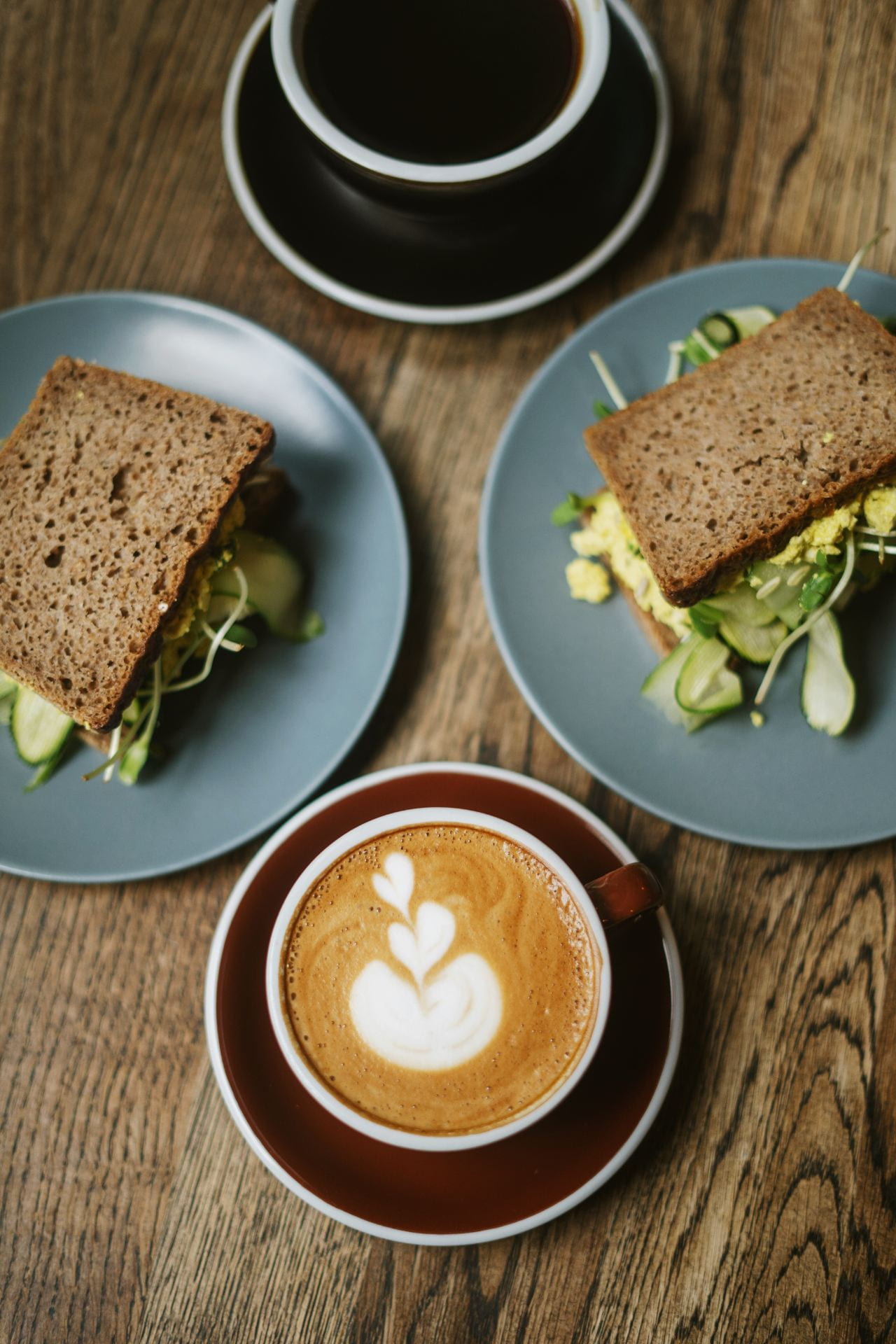
Photo by Olena Sergienko on Unsplash
30. Egg Sandwich (from leftover Deviled Eggs)
Did you make devilled eggs for an office party or family gathering? If you have extra devilled eggs, add them to toast and make an egg sandwich. This will be a delicious and quick breakfast. All you truly need for the meal is your leftovers and some bread. You could also add other ingredients, such as sriracha or avocado.
31. Chicken Pot Pie (from leftover meat)
Fill your classic chicken pot pie with a variety of leftovers: chicken, turkey, or even vegetables. This dish will be perfect after a long day at work or a cold day spent outside.
Recipe inspiration from Pillsbury.
32. Gnocchis (from leftover mashed potatoes)
If you have extra mashed potatoes from dinner and are wondering what to do with them, consider making gnocchis. This is a great way to repurpose your leftovers if you are a pasta lover. So, use the leftovers to have a traditional Italian dinner with your family and friends.
You can find a recipe from Life as a Strawberry.
33. Homemade KFC Bowls (from leftover potatoes, corn, or grilled chicken)
If you are a fan of KFC’s famous bowls—which are filled with gooey mashed potatoes, a handful of corn, chicken, and gravy—then you should consider making your own edition of this delicious dinner. Regardless of whether you have leftover potatoes, corn or chicken, this dish would be the perfect way to use your leftovers. Add your ingredients together for a nice dinner on a cold winter day.
34. Stuffed Peppers (from leftover Rotisserie Chicken)
Hollow out the innards of a pepper and fill it with a variety of fillings using your leftover items.
For instance, create a Southwest-themed pepper using taco seasoning, shredded rotisserie chicken, black beans, quinoa, peppers, and a variety of seasonings. You could create a buffalo chicken stuffed pepper using Tabasco buffalo sauce, ground chicken (seasoned with chili powder and paprika), garlic, and more.
Recipe inspirations from Eat This, Not That.

Photo by Suea Sivilaisith on Unsplash
35. Sandwiches (from leftover meats)
Use leftover meat to make a delicious sandwich. Here are some recipe inspirations:
- Turkey Reuben (using sauerkraut, relish, turkey, Swiss cheese, and your choice in dressing on rye bread)
- BLT Sandwich (using bacon, tomato, lettuce, egg, and cheese)
- Ham and Cheese Sandwich (using pepper jack cheese, mayo, and deli ham on bread)
- Italian Deli (using salami, pepperoni, prosciutto, peppers, mozzarella, lettuce, garlic, and vinaigrette)
- Salami Mozzarella (using mozzarella, salami, peppers, basil, and olive oil)
Recipe Inspiration from the Food Network and Eat This, Not That.
36. Buddha Bowls (from a variety of leftovers)
A Buddha Bowl contains small portions of several foods—typically vegetarian items—that are solved cold. They typically contain grain components, such as rice or quinoa, that salads typically lack. Along with the grain ingredients, they also hold an assortment of proteins (i.e. tofu or meat products) and ranging vegetables.
If you have any of the aforementioned items as leftovers, then you should consider making a Buddha Bowl for your next meal.
Here are some Buddha Bowl recommendations to whip up:
- Rice, Sweet Potatoes, Cabbage, Radish, Peas, Peanut Sauce
- Brown Rice, Black Beans, Cole Slaw Mix, Avocado, Pickled Onions
- Edamame, Carrots, Cabbage, Avocado, Quinoa
Recipe inspiration from Feasting at Home.
37. Pumpkin Pie Bites (from leftover pumpkin pie)
Scoop out the pumpkin pie filling from your leftover pie, and roll the filling into a ball. Dip the ball-shaped filling into melted white chocolate. Drizzle with cinnamon, sugar, and nutmeg. Enjoy the recreation of the delicious treat.
You could also recreate this recipe with other pie and cakes. Be creative with the recipe and even what you top the treats with. For instance, who said you couldn’t add sprinkles on top of these dessert bites?
38. Potato-Stuffed Tacos (from leftover mashed potatoes)
If you have leftover mashed potatoes from dinner, consider making potato-stuffed tacos. Add a dollop of potatoes across half a soft tortilla shell. Sprinkle your choice of cheese on top of the potatoes. Fold the tortilla in half and heat the tortillas on the stove until they are crispy. Top with your choice of toppings (i.e. salsa, lettuce, cheese).
This dish may remind you of a pierogi!
We hope these recipes helped save you some time and money. Hopefully your fridge will no longer be a graveyard for leftovers and soon-to-expire foods.
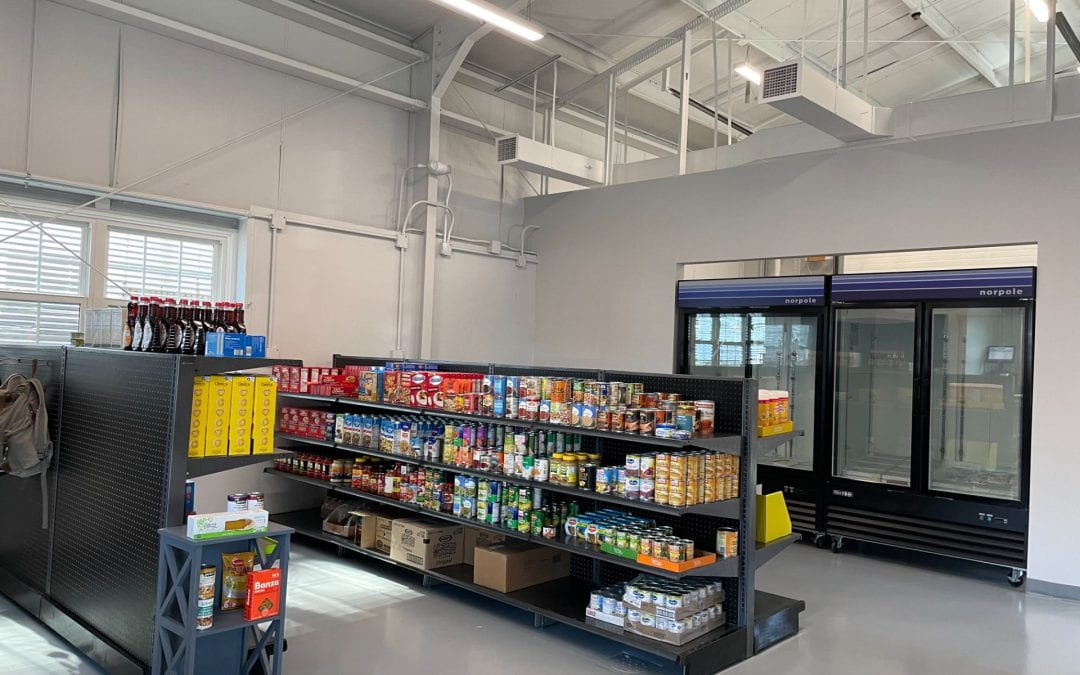

 Who is Nithika Menon?
Who is Nithika Menon? 










